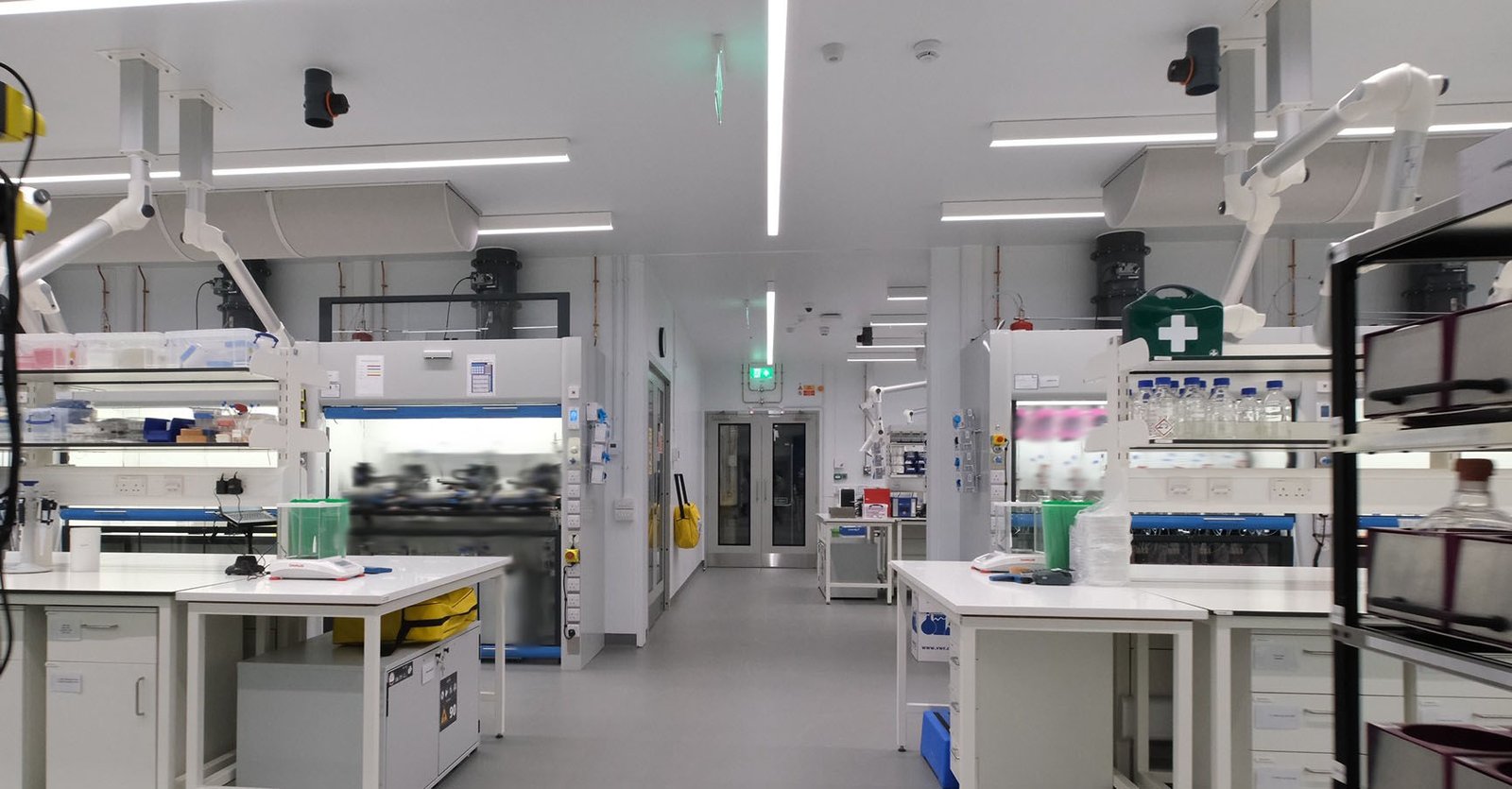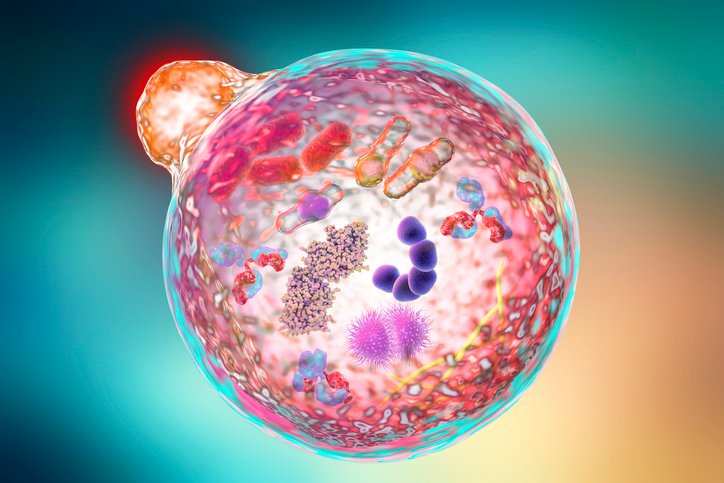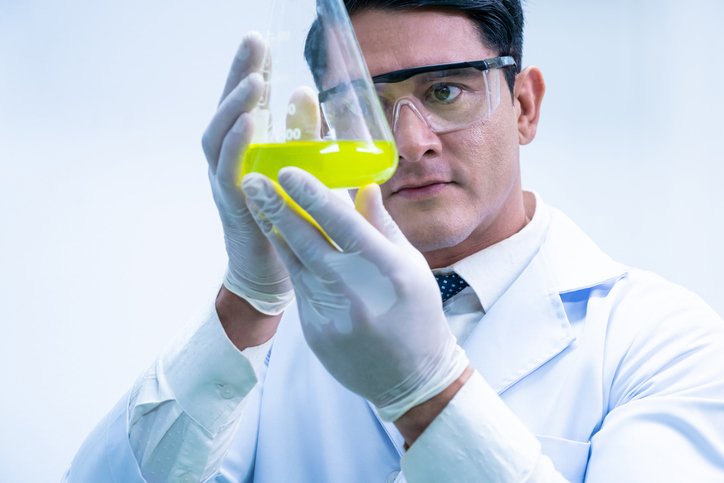Three years after spinning out from the University of Glasgow, Chemify has opened its first fully automated facility that marries chemistry, AI, computation, and robotics near the school in the city’s Maryhill area, with plans for a second in the United States and others elsewhere in the world.
Described by Chemify as the world’s most advanced lab for molecular design and synthesis, the new “Chemifarm” is a £12 million ($16 million), 21,500-square-foot facility at Oakbank Industrial Estate, created to shorten AI- and chemistry-based drug discovery. More than 60 full-time scientists and hundreds of robots will eventually be based at the Chemifarm.
By linking Chemify’s AI molecular design engine with industrial-scale robotic synthesis, Chemify reasons, it can accelerate the discovery of next-generation materials—and especially small-molecule medicines, by slashing the company’s drug discovery timeframe “from concept to compound.” The company also expects to cut down on the waste and errors associated with traditional chemistry.
“We can now move from code to compound faster than ever, fueling breakthroughs in drug discovery, materials science, and beyond,” Lee Cronin, PhD, Chemify’s founder and CEO, told GEN Edge. “The first Chemifarm is a watershed moment for molecular innovation.”
Chemifarm features dedicated production suites, R&D labs, engineering and fabrication zones, and a secure cloud architecture capable of storing petabytes of high-resolution chemical data for AI-powered analysis.
Central to Chemifarm’s work is the company’s Chemputation platform, consisting of a bespoke programming language, extensible robotics, and what the company calls the world’s largest curated and fastest-growing library of validated reactions—all intended to facilitate on-demand design, optimization, and scale-up of molecules once deemed unreachable.
“Imagine having a protein design space and a chemistry design space fused together,” Cronin said. “Chemify is now ready to do that. We’re the only company in human history to have that technology, which is great because chemistry hasn’t been programmable except for peptides and nucleic acids. We now bring programmable organic chemistry and together that opens up a new design space.”
Prototype for future U.S. facility
The new facility also serves as a prototype for the Chemifarms that Chemify envisions building worldwide, starting with a second such facility in the United States. Chemify shies away from linking a future U.S. site to the “reshoring” push being made by President Donald Trump to promote more domestic manufacturing, saying the site would be more of a response to customer demand for services they can access within their region.
How soon could a U.S. Chemifarm open?
“It could be as quick as the middle of next year, but it may be toward the end of next year, going into the year after. We’ll make sure we’ve got the unit economics right first,” Cronin said. “Expand too quickly, and that will be bad. Expand too slowly, also bad. But I think we’re at the point where we know what that roadmap is.”
“I think the United States is step 2 from Glasgow,” Cronin added. “Step three could be Singapore, Switzerland, or the UAE.”
Chemify says the task of opening future Chemifarms will be easier following its appointment of Michael Bell as chief technology officer. A digital computing veteran who helped lead the creation of the Apple iPhone and the launch of Intel’s mobile devices, Bell was appointed in February to help Chemify accelerate the capabilities of its digital chemistry platform and chemical programming language.
Cronin spun out Chemify in 2022 from the university’s Digital Chemistry Laboratory after developing a chemical description language, cDL (pronounced ChiDL). “Everyone said the language was boring,” he recalled, speaking with GEN earlier this year.
But boring wasn’t necessarily bad, Chemify concluded, since the purpose-built language could serve as an important tool for making chemistry accessible and reusable, and thus helping biopharmas in their quest to discover new drugs.
Chemify’s workforce has since grown to 135 people, Cronin said.
By digitizing chemistry, Chemify aims to broaden access reliably, at scale, to chemical space—the set of all molecules that could possibly exist. While the size of chemical space for drugs has been estimated at between 1023 and 10180 compounds, the small molecule space has been commonly cited as 1060.
“90% there”
“It seems that Chemify will have the technology to access the entire accessible drug chemical space by the end of this year, 2025. We’re already 90% there,” Cronin said.
“Chemify is not a drug discovery company, but we are an asset generator. And what that means is that we love to design with people and co-owned assets going forward,” Cronin said. “People’s attraction to us is we’re secure and we’re fast and we’re not going to be competing in drug discovery. People can trust us that the molecules we might design for someone because they bring no help to us. Their know-how remains theirs, because it’s all encrypted.”
Kevin McGowan, Chemify’s chief business officer, said the company’s “15 to 18” customers and commercial partners include “over a dozen” global biopharmas, none of which the company will disclose.
Through Chemify, those biopharma customers receive confidential, on-demand access to custom-designed molecules for early-stage research and development. Chemify also won’t say how many different assets it is generating right now, though one of its customers is working with the company “across a dozen areas,” Cronin says, adding, “The main thing is the more chemistry we do, the more we learn, the more we learn, the faster we get.”
Chemify has, however, named two collaboration partners. One is Dewpoint Therapeutics, which is collaborating with Chemify to apply groundbreaking chemistry AI toward accelerating the discovery of molecules targeting cancer and neurodegeneration, a partnership launched in 2023.
The other disclosed partner is the Bill & Melinda Gates Foundation, which last year awarded Chemify a $1,597,178 grant to discover new drug leads for treating tuberculosis and malaria by applying the Chemputation technology and workflow to design, make, and discover compounds.
“Commensurate with our expansion, we will be expanding the number of partners we’re working with and also getting funding for that,” Cronin said.
Chemify is funding its Glasgow Chemifarm through the Glasgow City Region Innovation Accelerator Programme, a U.K. Government-led initiative delivered by the U.K.’s national innovation agency, Innovate UK. The company has also received a grant of £1.1 million (about $1.5 million) from Scotland’s national economic development agency, Scottish Enterprise, toward the project.
“Our backing of Chemify’s ambition underscores our commitment to doubling the number of innovative scaling companies in Scotland by 2030, by fostering a dynamic, sustainable, supportive economic environment for businesses to grow,” stated Adrian Gillespie, chief executive of Scottish Enterprise.
The post Chemify “Farm” Cultivates Molecules by Marrying Chemistry, AI, and Robotics appeared first on GEN – Genetic Engineering and Biotechnology News.




